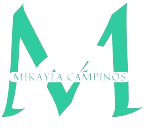In the digital age, businesses require reliable and secure methods of transmitting documents. Online fax services like Etherfax and Interfax have become essential solutions, streamlining the process while maintaining data security. Both platforms offer distinct features and functionalities that merit closer examination. Below, we delve into a detailed comparison to help users make an informed decision based on their specific needs. Keep reading for an insightful analysis that could redefine how you manage document transmission within your enterprise.
Etherfax vs Interfax: Understanding the Core Functionalities

When comparing Etherfax vs Interfax, businesses must weigh their priorities in security, integration, and ease of use. Etherfax stands out with its cloud-based, secure document delivery, particularly appealing to industries like healthcare that require regulatory compliance and seamless system integration.
Interfax offers a flexible, scalable solution for organizations of all sizes. With support for email, web, and API-based faxing, it simplifies the process for users regardless of technical background. Ultimately, the right choice depends on each company’s fax volume, infrastructure, and compliance needs.
Analyzing Security Protocols: How Etherfax and Interfax Keep Your Data Safe
Security is critical when choosing an online fax service due to the sensitive nature of transmitted documents. Etherfax ensures strong protection through HIPAA, PCI DSS, and SOC 2 Type II-compliant data centers, along with end-to-end encryption. Interfax also offers secure transmission with SSL encryption and stores faxes in protected data centers while allowing inbox access restrictions.
Both services prioritize compliance with industry regulations and conduct regular security audits. They provide tailored solutions for sectors like healthcare and finance, where privacy laws are stringent. Evaluating each provider’s certifications, encryption standards, and access controls is essential for businesses managing confidential information under strict legal and regulatory frameworks.
Compatibility and Integration: Facilitating Communication in Diverse IT Environments
In today’s diverse IT landscapes, seamless integration with existing systems is crucial. Etherfax offers strong compatibility by enabling virtual faxing through multifunction printers and enterprise systems, supported by its API-driven framework that blends easily into business workflows. Interfax also emphasizes integration, with a versatile API that allows fax capabilities across platforms like Windows, Mac, and Linux.
This cross-platform support benefits businesses with varied or transitioning tech setups. Both services cater to different integration needs, whether it’s simple cloud-based connectivity or in-depth API customization. Companies increasingly seek solutions that minimize disruption and are easy for staff to adopt, making intuitive interfaces and dependable customer support vital in the decision-making process.
Evaluating Performance: Speed, Reliability, and User Experience Compared

Alt text: Three screens display distinct financial metrics, analyzing performance aspects like speed, reliability, and user experience.
The performance of online fax services like Etherfax and Interfax is defined by speed, reliability, and user experience. Etherfax relies on a cloud-based infrastructure built to handle large fax volumes efficiently, reducing delays and downtime. Interfax emphasizes its globally monitored network for uninterrupted document delivery, supporting various faxing methods through email, web, or software integration.
Both services prioritize user experience through intuitive platforms and strong customer support, offering resources such as FAQs, documentation, and dedicated teams. These performance features play a key role in how each service supports business communication needs, particularly under high demand or in environments requiring seamless document transmission.
Cost Analysis: Subscription Models and Pricing Structures of Etherfax and Interfax
The cost of deploying an online fax service is a key consideration for businesses. Etherfax offers customized pricing based on fax volume and required features, allowing users to avoid paying for unnecessary services. Its scalable plans suit businesses of varying sizes and needs.
Interfax provides tiered subscription plans based on pages sent and received, offering predictable expenses and optional add-ons for specific features. Evaluating the cost-effectiveness of Etherfax vs Interfax involves analyzing pricing transparency, hidden fees, scalability, and flexibility in modifying or canceling services. The right choice depends on how well each provider’s pricing aligns with operational needs and the potential return on investment over time.
Overall, the decision between Etherfax and Interfax hinges on a deep understanding of each service’s features, security measures, integration capabilities, performance metrics, and cost implications. By carefully assessing these factors, businesses can select the fax solution that aligns with their requirements, enhancing their document transmission processes and maintaining the necessary levels of data privacy and security.



